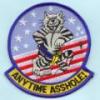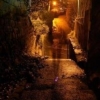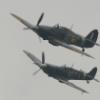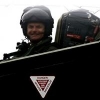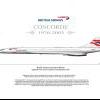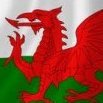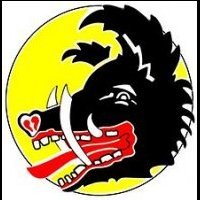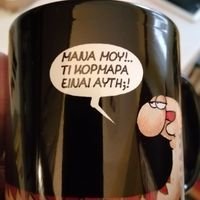Search the Community
Showing results for tags 'academy'.
-
Well here we go discovered my P.E. is for an M and Legends resin look far too difficult. I know nothing about the P-40 to risk it
-
Magach 6B Gal Batash, for Academy 1:35 Eduard Next in the Eduard release fest detail set for the superb Academy 6B Gal Batash. The single sheet of relief etched brass contains numerous parts to super detail the hull. As with previous Eduard sets, some of the kit details will need to be removed before the etched parts are added, although in this set there seems to be more removed than most other sets. The removed items include brackets, tie downs, storage box hinge plates and handles, front mudguards, driver vision ports, and rear brackets for the headlights. The main parts that need folding are the Jerry can storage holder, machine gun ammunition box, ammunition box storage racks, mudguards, brackets, storage straps, and the new vision ports so although there are lots of small parts this is in fact one of the easier sets to use. The bustle storage cage receives a new mesh base, external brackets and grab rail around the top, whilst the machine gun has new sights and firing handle brackets for which the modeller will need to provide some shaped styrene rod for the handles. The main gun sight doors will also need some styrene rod to reproduce the hinge, the doors can then be posed either open or closed. Conclusion Another useful set for the modeller who really must super detail their Batash. The kit is already very nice out of the box, so this is really very much adding the gilding to an already well iced cake. But there are some nice additions that are missing from the kit so even if you don’t use the whole set you can add that little extra to the finished model. Highly recommended. Review sample courtesy of
-
Hello All Just joined, so I'd like to share my latest model; an Academy 1/48 CH-53E. Before that, a few things though. This is both my first chopper, and my first attempt at using my new airbrush, so be gentle Big, isn't it? I know its not completely accurate (rotor markings especially) but it adds a bit of colour to an otherwise grey model. I did have soem trouble with the decals; they just wouldn't sit on the model. Not sure if it was because I didn't use enough gloss, or because the kit was 2nd hand and had been stored somewhere moist, so it doesn't have as all the markings it should, but not much I can do now. Comments appreciated Cheers Anirudh
- 16 replies
-
- 5
-

-
Hello all, Here is my entry for this GB; Academy's 1/48 Su-27 Flanker B in the markings of the Ukrainian Air Force. The kit: The aftermarket: Will be using a Pavla cockpit, Quickboost resin nose, Master brass pitot tube, Begemot decals and a J's Work paint mask. The scheme, though not the exact aircraft: (Picture from the net) Once my F-14 is cleared off the bench, I'll make a start. Dave
-
Hi all,Academy,s little Storch just finished.It was a cracking kit to build a bit fiddly and wing issues which needed fixing but it was cheap,fell into my interest in building some Luftwaffe types and I had never built one before! Hope you like and background story here http://www.britmodeller.com/forums/index.php?/topic/234977389-academy-172-fiesler-storch/
-
Hi Folks,here,s a rarity,a plane I,ve never modelled before! It,s the elderly Academy offering of this what I think was quite a modern looking aircraft for it,s time as far as light aircraft go.The kit is beautifully molded.and although it,s in the shiney smooth plastic Academy builders will be used to they have molded the fuselage with a rough texture to replicate what I can only guess it,s fabric covering.I thought I would add a few more details missing from the basic kit cockpit wise mainly on the sides which have no details at all,I,m referencing a 32 scale build from an old copy of SAMI.So here,s a start,hope you enjoy!
-
Morning folks.here,s my take on Academy,s old FW190A.I know nothing of the accuracy of this kit personally to me the kit sit,s too high but it looks like a 190 to me and for £3:50 I,m happy enough,it was just another practice kit this time for the mottling which with my very basic airbrush which I tried on 1 bar.I have had a bit more practice on an old kit on 3bar and got a better result which I hope to try on an Italian based machine in green over sand.Many thanks for looking.
-
Hello, With the arrival of the airbrush and compressor yesterday I've decided to take the plunge and build two kits at the same time. the two kits I'm building are the 1/100 Academy F-14 and the reboxed Italeri/Tamiya Jaguar GR-1, here is the usual box shots for the moment. Box Shot of both kits: Academy 1/100 F-14 Tomcat: Stand for the Tomcat: Sprue A: Sprue B: Tamiya/Italeri Jaguar GR-1: Sprue A: Sprue B: The Tomcat is going to be finished in White, and at the moment I'm unsure about the Jaguar, its either going to be in the Gulf War Colours or the Grey/Green scheme which it can also be built in! Thanks for Looking.
-
At the start of this year, one of my goals was to do comparison builds. I think it will make me do more kits and reduce the ever growing, multiplying exponentially stash that, frankly, it just out of control. I do not know how these things happen. (Perhaps build one kit a month, buy 5, maybe?) Anyway, this group build seems like the perfect place to start. Plans are to complete comparison builds of the 1/32 He 219 (Revell & ZM), 1/32 Mustang (Tamiya, Trumpeter, ZM), 1/48 Me 410 (Meng & Revell), 1/32 Skyraider (ZM & Trumpeter), 1/32 Me 163 Komet (Hasegawa & Meng) and 1/72 Sunderland (Airfix & Italeri). In the stash at the office, (Yes, the stash is so out of control, I have two one at the office and another in a storage shed) I found the ProModeler P-40 E Warhawk and the Academy Tomahawk IIb , both in 1/48. Both of these kits are reissues. The ProModeler kit was originally issued in 1978 by Revell. The Revell kit was redone as a ProModeler kit with the box instructions having a 1995 copyright mark. The Academy kit was originally produced by HobbyCraft in 1996 as a Pearl Harbor Defender. This Academy kit was reissued in 2011 with updated decals for Aces of the African Front. The Academy kit will be done as the mount of Pilot Officer Neville Duke as every P-40 collection should have a shark mouth! And, in my opinion, the shark mouths of the 112 Squadron are far more aggressive looking than the AVG versions. The ProModeler kit will receive aftermarket decals. The kit decals look fine, but they are a little aged and yellowed. And since I have an abundance of AM decals for the P-40 (how did I acquire so many?) the Cutting Edge “Colorful Warhawks Part 1” will donate the scheme for an Aleutians’ tiger scheme. The obligatory sprue shots. First Academy. Then ProModeler And the build will begin next.
- 26 replies
-
- P-40 E
- Tomahawk IIB
-
(and 4 more)
Tagged with:
-
Finishing off that Typhoon a couple of weeks ago reminded me that I had a completed Academy Tempest sitting somewhere at the back of the garage. I dug it out and gave it a clean (and stuck the few bits that had fallen off). Actually built it about 8 or 9 years ago. I think it was one of the first models I completed with brush painted Tamiya acrylics. Completed out of the box as the aircraft of Wing Commander E.D. Mackie, OC 122 Wing, Fassberg, May 1945. Thanks for looking.
- 8 replies
-
- 15
-

-
- Academy
- Hawker Tempest
-
(and 1 more)
Tagged with:
-
Hello, This morning I took a look through my spares box and found a few Tamiya centre and rear section canopies. It dawned on me that I had a short shot in another spitfire kit and compared them to see if I could make a swap. The Tamiya Mk. Vb rear most section was very skinny in comparison to the Hasegawa Mk. IX. I took out a few more kits and discovered the Fujimi Mk. XIV and the Sword PR. IV were very different as well. Was there a large change in the size of the windscreen, hood, or rear (backlight?) sections between Marks? Taking out of consideration armoured/unarmoured and PR style windscreens. The Fujimi seemed monstrous, yet came from a later Mark. And I won't mention the Academy... Which canopy should be considered "The Best" ? Thank you for looking in.
-
276468 UN*R of the 63rd Fighter Squadron, 56th Fighter Group, based at Wittering, Northamptonshire, from 13th January to 5th April 1943. Academy 1/72 Republic P-47D Thunderbolt 'Razorback' (2175)
-
Fieseler FI.156 Storch “Afrika Korps” with Kübelwagen
-
Good morning, just to show some progress of the Academy Crusader. I will add the aires cockpit set (the first I ever used), and the quickboost flaps. As you may know, if the wind is raised, the flaps/slats will automatically come down. It's something which academy has forgotten. For the decals, I will use the excellent sheet from Xtradecal. I started with the white parts, which are built into the fuselage. It's all gunze flat white acrylic, then a brush cote of the german "clear" (Erdal Glänzer), and some oil wash. Wheels are done with revell anthrazite, brush painted, after a drop of highly diluted oil colour where the tire meets the rim. That give a sharp edge. Airbrake is shown without washing, to show the difference. A detail photo of the main gear bay. The lowered slats. Since the parts are already separate, I just needed to sand the edges down, and fill the gap with some sheet. On the underside, I filled the gap with some stretched sprue, glued with extra thin cement. right hand side already filled, left side to go. The cockpit. Nice details, however I prefer seats with moulded harness. A coat of primer, then DSG, some drybrushing, and detailling with revell acrylics. The dashboard looks also better than the kit part. HUD will be added later, just before the windscreen. Thanks for attention! Alex
-
I offer my completed 1:72 Academy conversion of the GMC 353 to GMC CCKW refueller. This vehicle is part of a small diorama representing Cuban Revolutionary Air force operations during the 'Bay of Pigs' period. I have tried to make the vehicle reflect it's age as a 15 year old veteran of WW2 operating in the challenging conditions of Post revolutionary Cuba with just the minimum of maintenance. The driver is wearing typical green fatigues and the Cuban beret rather than the more usual cap. I had hoped that day light photography would make the tyre tread less 'white', it is supposed to represent concrete dust. Is it too light do you think? The rear view mirror was made by punching a disk of aluminium foil and, using PVA or araldite, sticking a suitable fine wire/plastic arm on. I think I could do with creating a bit more wear and tear around the rear 'bits'.
-
Hi all I haven't felt motivated to build anything since my Hasegawa P-47D Nose Art Collection Set in August 2014. However, I recently bought the Academy D-day set from those wonderful people at Creative Models and decided to add to my occasional RAF Boxted/USAAF Station 150 (here and here) collection by completing the Razorback in the set as "Spirit of Crawford Missouri", using the included decals. I found a colour photo of the subject taken on September 21st 1944 at Boxted, which was the day that this machine was lost near Arnhem, killing pilot 2nd Lt. Oscar L. Cagle Jr. This model was built last weekend as a "duck-breaker" straight from the box with ANA (Absolutely Nothing Added - not even tape seat belts!) The model was ideal to rekindle my enthusiasm, as it was a delight to build, with no and I mean NO filler used anywhere! The kit decals were intended to depict the aircraft on D-Day, but I wanted to show it roughly as it would have looked in September 1944, which meant not applying the wing stripes and cutting out the fuselage "Stars and Bars", as the invasion markings around the upper part of the fuselage had been removed by then. I used LifeColor Olive Drab and Neutral Gray applied in a deliberately blotchy manner, as this machine would have been relatively well-used by then, but a study of all the photos in the Roger Freeman/Osprey book "56th Fighter Group" shows that the airframes were clean and well-maintained at Boxted. I applied some minor chipping with a silver pen and gave the whole model a light Raw Umber wash, which was dragged in the direction of airflow. I used a tiny amount of Mig Black Smoke Pigment on the wing surrounding the .50 cal with the shortest barrel protrusion and a small streak to simulate exhaust staining on each side of the lower fuselage. All in all, this was great fun weekend build and the only criticism I would make of the kit is that the main gear legs seem too long, but I haven't measured them and made any comparisons with plans. Thanks for looking (please excuse the dust and the unattached windscreen as well as the poor quality images!) And here she is with the Hobbyboss kit on the left of the images and the Hasegawa kit on the right:
- 16 replies
-
- 14
-

-
The latest one off the bench... This is Academy's 1/48 Corsair F4U-4B, a fantatsic plane and what an enjoyable build! As ever I like to add my own touch to my builds on this particular kit I have: scratch built some detail in the cockpit added some piping to the engine scratch built the lowered flaps added some plumbing to the wheel bays. It is pre shaded, painted with Tamiya paint, weathered with Flory's dark dirt wash and exhaust stains and gun smoke stains with Tamiya weathering pack. This was the first, I think successfull, attempt at pre shading and whilst there are some errors I can live with the finished kit. Thanks for looking, as ever comments welcome... Once again thanks for looking.... Leon
-
I’ve mentioned previously that my first model was a FROG 1:72 DH Comet racer, it was a present from a friend on my 7th birthday. My dad built and painted the kit for me, having never built a plastic kit before in his life and I though it was magnificent. Strangely dad was never really enthusiastic about my new hobby following that build, but now and again he would get a wee bit more excited, like when I bought my first (Airfix) P-38 – I’ve posted photos here before of my grandfather’s truck towing P-38’s through Liverpool in 1943 so I won’t bore you by repeating that tale. The only other aeroplane dad got excited about was the Catalina. Following the loss of HMS Hood in spring ’41 (and the subsequent sinking of the ‘culprit’ Bismarck), Catalina’s and Fairey Swordfish the types that had hunted-down and damaged Bismarck, were sent out on (what we would now call) PR visits to towns were the loss of the Hood was particularly felt. Hood had been berthed in Liverpool in May 1940 for rest & refit. My grandfather took my dad to see the Catalina that was moored somewhere in the Mersey and he was lucky enough to be taken aboard… He never forgot his experience. Often when we went to local toy-shops he would try to get me to buy the Airfix or Revell Catalina kits, I always maintained that I’d build one for him ‘one day’. Dad died in January 1988 and I never did build him a Catalina. It’s one of those things that crept across my mind occasionally when I was deciding what model to build next… “Hmmm, I really must do a Catalina one day, for dad…”. I was having that very thought as I was browsing eBay a few months back, and then… …BAM !! – a trader I’ve bought a lot of decals from, had Aeromaster 72-039 for sale, a Catalina sheet that included WQ*Z (AH545), the machine that first spotted the Bismarck on the 26th May. I bought the sheet and here's the result. Thanks folks, for taking the time to read this, I know it is long-winded but it’s a form of catharsis that I needed to go through and I appreciate you’re patience. * * * Kit - Academy 1:72 Paint - All enamels, Humbrol & Xtracolour. Decals - Aeromaster 72-039 Extras - None. Consolidated Catalina I 209 Squadron RAF Coastal Command First aircraft to spot & track the Bismarck 26 May 1941 As ever thanks for taking the time to look and/or comment. Please feel free to ask any questions or leave any criticism, it's all welcome. AFN Ian.
- 33 replies
-
- 38
-

-
USS Indianapolis Premium Edition Academy 1:350 History Indianapolis was the second of two ships in the Portland class; third class of "treaty cruisers" to be constructed by the United States Navy following the Washington Naval Treaty of 1922, following the two vessels of the Pensacola class ordered in 1926 and the six vessels of the Northampton class ordered in 1927. Ordered for the U.S. Navy in fiscal year 1930, Indianapolis was originally designated as a light cruiser, and given the hull classification symbol CL-35, being re-designated a heavy cruiser with the symbol CA-35 on 1 July 1931. As built, the Portland class cruisers were to be 610 feet 3 inches (186.00 m) in length overall, and 592 feet (180 m) long at the waterline, 64 feet 6 inches (19.66 m) abeam, and with a draft of 21 feet (6.4 m) (24 feet (7.3 m) maximum). They were designed for a standard displacement of 10,258 tonnes (10,096 long tons; 11,308 short tons), and a full-load displacement of 12,755 tonnes (12,554 long tons; 14,060 short tons). However, when completed she did not reach this weight, displacing 9,800 tonnes (9,600 long tons; 10,800 short tons). The ship featured two distinctive raked funnels, a tripod foremast, and a small tower and pole mast aft. In 1943, light tripods were added forward of the second funnel on each ship, and a prominent Naval director was installed aft. The ship was equipped with four propeller shafts and four Parsons GT geared turbines and eight Yarrow boilers. The power plant generated 107,000 shaft horsepower (80,000 kW) and the ship had a design speed of 32 knots (59 km/h). She was designed for a range of 10,000 nautical miles (19,000 km; 12,000 mi) at 15 knots (28 km/h). She rolled badly until fitted with a bilge keel. The cruiser was armed with a main battery of nine Mark 9 8"/55 calibre guns arrayed in three triple mounts, a super firing pair fore and one aft. For anti-aircraft defence, she was armed with eight 5"/25 calibre guns as well as two QF 3 pounder Hotchkiss guns. In 1945, the anti-aircraft defences of Indianapolis were upgraded, and she received twenty four Bofors 40 mm guns, which were arrayed in six quad mounts. Both ships were also upgraded with twelve Oerlikon 20 mm cannons. No torpedo tubes were fitted on her. The Portland class was originally armed with 1 inch of armour for deck protection and side protection, but during construction these were substantially up-armored. As completed, the ships were armed with belt armour between 5 inches (around the magazines) and 3.25 inches in thickness. Armor on the bulkheads was between 2 inches and 5.75 inches, while armour on the deck was 2.5 inches, armour on the barbettes was 1.5 inches, armour on the gun houses was 2.5 inches, and armour on the conning tower was 1.25 inches. Additionally, the Portland class cruisers were designed to be outfitted as fleet flagships, with space for an Admiral and his staff to operate. The class also featured an aircraft catapult amidships. They could carry four aircraft. The total crew complement varied, with a regular designed crew complement of 807, a wartime complement of 952, which could increase to 1,229 when the cruiser was operating as a fleet flagship. The Indianapolis had an eventful and busy war either escorting carriers or bombarding shore facilities and batteries in preparation for amphibious landings. The was hit several times, the worst being on 31st March 1945 when a Japanese aircraft managed to get through the flack and dropped a bomb whilst in a steep dive. The aircraft just missed the quarterdeck, but the bomb went through the main deck, crews mess hall, berthing compartment, and fuel tanks, before crashing through the keel and exploding in the water underneath. She was saved by the watertight compartments and bulkheads which prevented any major influx of water. After emergency repairs by a salvage ship she managed to make her own way across the Pacific to Mare Island, California to have major repairs and a complete overhaul. In July 1945 Indianapolis received orders to proceed to Tinian Island, carrying parts and the enriched uranium (about half of the world's supply of Uranium-235 at the time) for the atomic bomb Little Boy, which would later be dropped on Hiroshima. Indianapolis departed San Francisco on 16 July. Arriving at Pearl Harbour on 19 July, she raced on unaccompanied, reaching Tinian on 26 July. Indianapolis was then sent to Guam where a number of the crew who had completed their tours of duty were replaced by other sailors. Leaving Guam on 28 July, she began sailing toward Leyte where her crew was to receive training before continuing on to Okinawa to join Vice Admiral Jesse B. Oldendorf's Task Force 95. At 00:14 on 30 July, she was struck by two Type 95 torpedoes on her starboard bow, from the Japanese submarine I-58 under the command of Mochitsura Hashimoto. The explosions caused massive damage. The Indianapolis took on a heavy list, and settled by the head. Twelve minutes later, she rolled completely over, then her stern rose into the air, and she plunged down. Some 300 of the 1,196 crewmen went down with the ship. With few lifeboats and many without lifejackets, the remainder of the crew were set adrift awaiting rescue. About 900 men went into the water and due to the fact that the ships loss went unreported it was four days before they were accidentally discovered and reported by a US Ventura, by the time rescuers arrived only 317 men survived, the rest were lost either due to starvation, hypothermia, dehydration and the infamous shark attacks. The loss of the Indianapolis became the worst disaster in US Naval history. The Model Academy originally released the kit of the Indianapolis in August 2013 and very nice it was too. This release brings with not only a whole host of goodies, but a model of the I-58, (originally released by AFV Club), as well, which also comes with additional parts. The kit/kits come in a sturdy box with an attractive stylised painting of the Indianapolis in heavy seas over which is a new cover sleeve with a black and white picture of the same scene. As with the original issue inside there are the separate upper and lower hulls allowing the kit to be made into a waterline model should the modeller wish. The lower hull is moulded in red styrene whilst the upper hull is in Academys greeny grey styrene, as are the four large sprues and separate superstructure part. There are also two smaller sprues of black styrene. The I-58 kit also has upper and lower hull parts separate, once again allowing the modeller to produce a waterline model should they so wish. The submarine also has two sprues of dark grey styrene. This issue also provides the modeller with a whole host of turned brass parts for items such as the masts, boat booms and barrels for the main and secondary armament etc, along with self adhesive wooden decks for both kits. Two sheets of etched nickel and two sheets of etched brass, some parts of which are intended for the sub are also included. A small decal sheet and a sheet of dry transfers complete the contents. The parts of both kits are all very cleanly moulded with no sign of flash and only one or two moulding pips. The parts are held very securely on the sprues and while the majority of gates are quite small there are some tiny parts that will need to be carefully cut away as they look likely to break. Detail though is very good, with some fine mouldings on the superstructures although the anti-slip decking on the anti-aircraft decks, does look rather heavily overdone, especially if one scales it up to full size, the anti-slip would be a trip hazard. If the fit of the hull parts is anything to go by then the rest of the kit should go together like a dream. The jury is out on why some of the parts are moulded in black styrene, they really should have kept all the sprues the same, but since most modellers prime their models before painting then its not too much of a problem, just in this case itll be a matter of having to rather than wanting to. With the addition of all the brass and etched parts Academy felt that rather than updating the instructions they would include three separate A3 sheets showing the construction of the parts and what modifications need to be carried out. Although they are in full colour and are very clear it will make construction rather awkward having to refer to each sheet and the original instructions throughout the build. That said, if one is methodical and having read the sheets thoroughly, writing a list of the build order will pay dividends. Some sub-assemblies also require the modeller to provide some styrene rod to complete them, particularly so for the smoke canisters. The basic construction begins with the fitting of the lower hull to the upper hull. Of course, if the model is being built as a waterline then this section can be by-passed. If being built as full hull then the four propeller shafts are fitted with the propellers and fitted to their respective positions, along with the ships rudder, whilst at the bows the two anchors are attached. The two deck sections are fitted to the upper hull, being fixed into the groove around the hull edge and supported by three posts pre-moulded in the lower hull. The four boat booms are fitted to the sides of the upper hull, two foreward and two aft. Now the instructions call for two ships boats to be attached to their davits and fitted to the deck alongside what will be the aft superstructure. It would probably be best to leave these off until near the end of the build as they will easily be knocked off and also be an obstacle to painting. The smokescreen canisters are also fitted to the stern at this point. The rest of the build can be broken down into a series of sub-assemblies if required to make for an easier build and easier painting, but this review will stick to the instructions. The three turrets are built up out of the main gunhouse, turret base, single piece trunnion, onto which the three gun barrels are attached. Once completed B and C turret are fitted out with four liferafts, while A turret is fitted with six. Once the lower deckhouse of the front superstructure is fitted to the deck the three turrets can be mounted. Three paravanes, four floatation baskets, a life raft and to twin 20mm Oerlikons are then attached to the lower deckhouse. The fore funnel is constructed using the two funnel halves, the black styrene funnel tops and grilles, two exhaust pipes and a liferaft. The assembly is then fitted to the aft section of the lower deckhouse fitted earlier, followed by three cable reels, another small chimney and a ventilator. Right aft, on what the US Navy calls the fantail two quad 40mm Bofors mounts are fitted as are their fire control posts. Moving foreward the bridge tower is assembled. This is made up of a deck mounting two more 40mm Bofors mounts in their tubs, onto which the lower tower is fitted. The bridge deck is then attached followed by the bridge section itself, into which the upper bridge is fitted along with the foreward main gun director assembly, observation tubs, aldis lamps and binocular stands. The bridge structure has the two foremast supports running right from top to bottom at an angle. Onto these supports the two mast platforms, the director tower, and director unit are attached. The top mast assembly is then fitted. This assembly is made up of lower mast, platform with small radar fitted, yardarms with pre-moulded supports and finally the topmast. The completed bridge structure is then fitted to the forepart of the lower deckhouse. Aft of the bridge two small deckhouse assemblies with additional floatation baskets are fitted as are three aerials. Right aft of the lower deckhouse the spare float for the aircraft is attached along with its support. The mast, aft funnel, main mast, AA gun decks and aft superstructure are assembled next. The tripod main mast is made up the front leg with pre-moulded bracing beams is attached to the rear pair of legs. Onto the tripod a platform is fitted along with the yardarms. On the platform the large rectangular radar array is attached to the rear, while the topmast is attached to the front. The aft funnel is a simple affair, with just the two halves that need to be glued together. Each of the AA gun decks has four single 5 AA mounts, with each mount made up of the mounting, trunnion and barrel. The forward deck also has two quad 40mm Bofors fitted. The funnel deckhouse is made up of three side and the roof, onto which the funnel is fitted along with four director tubs and two searchlights. Just aft of the funnel there are three steam pipes and aft of those a small deckhouse is fitted. The aft radar tower is constructed from two halves, turntable and radar array. With the aft superstructure fitted to the quarterdeck just aft of the rear turret and the hanger doors fitted to the rear of the central well, the gun decks, now fitted with the radar tower, mainmast, eight 5 and two quad 40s can be fitted. Just aft of the rear gun deck another small deck piece is fitted with the aft main gun director four twin 20mm Oerlikons and four floatation basket. The two catapult turntable towers are then fitted on either side the amidships hanger well. Onto these the two three piece catapults are fitted and posed either stowed or angled for use. There are four aircraft included in the kit, two Curtis SOC Seagull biplanes and two Curtis SOC Seahawk monoplanes. Both were used on the Indianapolis with the Seahawks shipped only a month or so before she was sunk, so depending on when the modeller wishes to depict the model will decide which aircraft they wish to fit. The Seagull aircraft are made up of a single piece fuselage, complete with canopy, upper and lower wings, separate main float and wing floats, cabane and interplane struts, horizontal tailplane and separate propeller. The instructions dont actually show how these aircraft go together but its pretty obvious form the sprues. The Seahawks also have a single piece fuselage, and are completed with the fitting of the wing, horizontal tailplane, main and wing floats, plus the propeller. Neither aircraft has the option of being folded but this shouldnt be too difficult to achieve for the average modeller. With the aircraft fitted onto the catapults the aircraft crane is attached just forward of the mainmast. Completion of the model comes with the fitting of the Jack and Ensign Staffs. To display the full hull model Academy have provided a nice looking stand onto which the ships name plaque is attached. Once you include the replacement turned brass masts, yards, gun barrels, radar domes, capstans, whip antennas, derricks, crane pole, crane legs and the numerous etched brass parts such as new catapult, crane, radars, railings, prop guards, 40mm Bofors details, Main gun director details, 5 gun director details, direction finders, davits, ammunition racks, bridge details, and floater nets plus the wooden decks, this model will become something of a museum piece and should look stunning when complete. All the brass parts are beautifully finished, with only the odd part needing any cleanup, usual just at one end. The I-58 submarine is a somewhat simpler affair, but before the upper and lower hulls are joined the modeller is required to fit parts from the inside of the upper hull and the assembly of what would be the pressure hull, but this may be left out as it is completely hidden once the hull parts are joined. These include the bow planes, in either retracted or extended condition, upper rudder, and retracting aerial mast, whilst in the lower hull the lower rudder is fitted. With the hull sections joined the fordeck is fitted along with the anchors and capstan. The wooden deck is then applied before the fitting of the forward torpedo hatch. Back aft, three more bollards are fitted topside, whilst on the lower hull the two propeller shafts, A frames and propellers are attached, along with the rear diveplanes and their associated support arms. The conning tower consists of two halves and deck, for which a wooden deck part is provided. Onto the resulting assembly the twin snorkel tubes are added, along with the search binoculars, and aft mounted twin AA gun. The forward observation area is covered and the three periscopes attached, followed by the radar horn and upper aerial array. The conning tower is now fitted to the upper hull. The six Kaiten are then fitted to their respective positions on the deck, although whether these were carried during the attack on the USS Indianapolis is debatable. The sub build is completed with the fitting of the brass railings and rear propeller guards. The kit also comes with a useable stand for display. Decals The two small decal sheets provide markings for both ship and submarine, but these are limited to their identification numbers and flags. The Seagull aircraft has only the national Stars and bars. The dry transfers are for the ships draft markings for the forward, mid and aft positions plus alternative ships numbers. The decals appear to be nicely printed, in register and without too much carrier film so should settle down ok with a bit of softening solution. Conclusion The original release of the Indianapolis was a lovely looking model, but this release doesnt just take it to the next level, it takes it to several levels above. The inclusion of so much brass both turned and etched means that there is nothing else required for the modeller to buy, its all here in one box. Although the price has obviously increased to reflect the additional parts its certainly better value than having to buy the parts separately. On top of all that you also get the lovely I-58 kit included and this too has additional parts to update the original kit, what more can you ask for. I will say that all those extra parts mean that this is definitely not a kit for the beginner, and I think some intermediate modellers may struggle. But if you take that extra bit of care, particularly when it comes to try to read four sheets of instructions, a bucket full of patience and a methodical mind a pair of stunning models can be produced. Very highly recommended. Review sample courtesy of
- 8 replies
-
- 3
-

-
- Indianapolis
- I-58
-
(and 2 more)
Tagged with:
-
Bought this kit for a couple of months and after almost finishing the hasegawa EF2000, it would be interesting to see how this kit stands up against others. I elected to begin construction with the cockpit. There are only five main parts and they were glued and primed in a couple minutes. Sorry for the lack of photos, I just figured out how to add photos to my posts.
-
My entry for this GB. The P-40 Tomahawk IIb 'Ace of African Front' boxing from Academy. Review here at IMPS. A bit of background: This build will depict AK402, GA-F, 112 Squadron. This aircraft was flown by Pilot Officer Neville Duke, based at Fort Maddelena in Libya, November 1941. Neville Duke was one of the highest scoring Allied aces, with 27 kills by the war’s end. While flying AK402, Duke was shot down on Nov 30, 1941 by Otto Schulz of 4/JG27. He belly landed safely. Inside the box are three sprues of gray plastic, a clear one for the transparent canopy parts, the instructions and a decal sheet with four options. I'll use also AML's interior conversion, Ultracast early P-40 Seat with Sutton Harness, Ultracast Tubular Exhausts and Eduard's Canopy Mask. Now i've to await eagerly the D-day. References used: Osprey Aircraft of the Aces - Tomahawk and Kittyhawk Aces of the RAF and Commonwealth Osprey Air Vanguard - Curtiss P-40 Long-nosed Tomahawks Osprey Modelling - Modelling the P-40 Detail & Scale - P-40 Warhawk in Detail Various web resources
-
- 3
-

-
- P-40 Group Build
- Tomahawk IIb
-
(and 3 more)
Tagged with:
-
Hi everyone ! Finally finished ! Hope you like it
- 25 replies
-
- 23
-

-
Lavochkin La-7 “Russian Ace” Academy 1:48 History Lavochkins La-7 aircraft were the ultimate development in the Lavochkin series of fighters during World War II. Their stopgap predecessors were made almost entirely of wood, and were easy prey to Luftwaffe fighters. In 1941 development started on upgrading the fighter's airframe to accommodate a 14 cylinder engine, replacing the formerly used V-12. The goal of designing the Lavochkin La-7 was to achieve longer range and higher overall performance. The resulting La-7 was an excellent thoroughbred fighter. The aircraft featured the most powerful engine put into Lavochkin fighters, the Shvetsov ASH-82FN that produced 1,850 hp. In addition to greater engine power, the new aircraft used metal wing spars in place of its predecessors wooden ones, was lower in weight, and had much improved streamlining. The pilot was protected with thicker cockpit armour and later models of the aircraft reduced pilot workload by introducing single lever propeller pitch control. The La-7 was highly manoeuvrable, with a fast rate of climb and excellent high altitude performance. The aircraft quickly gained a reputation as an excellent fighter. It was extremely responsive to control and could outperform all other Soviet fighter aircraft. Its three 20 mm cannons delivered a deadly punch According to some records, Lavochkin La-7 aircraft downed some 3,100 Luftwaffe aircraft vs. only 115 of their own aircraft being lost. One is credited with a victory over a Me-262 jet fighter, the only Soviet aircraft to do so. Over 5,750 of the aircraft were produced. These aircraft continued to serve the Soviet Union through the mid 1950's. The Model Originally released in 1990 this kit has been re-popped a couple of times before this release including once by Hobbycraft. Although a relatively simple build, it does look fairly well detailed for its age. The kit is packaged in a top opening box with an artists impression of the aircraft in flight, unusually viewed from the underside. Inside there are just three sprues of blue-grey styrene, a small clear sprue and a sheet of decals. Even though the kit is getting on a bit, the moulds still seem pretty good as there is no sign of flash or other problems. There are some flow marks, particularly on the upper wings, but these will be invisible under a coat of paint. The finely engraved panel lines look pretty good as do the fasteners and rivets. The only real problem areas appears to be on the flight control surfaces, where the ribbing under, what I presume is fabric, is quite heavily done and could do with some rectification to lessen the effect. The build begins in the nicely detailed cockpit. The cockpit consists of the floor, front and rear bulkheads, separate instrument panel, joystick, seat and behind the seat armour panel, rear coaming, two black boxes, which I presume are for the radio and battery, and completed with the fitting of the clear gunsight. The completed cockpit is then sandwiched between the two fuselage halves The single piece lower wing has a number of holes that need to be opened up, should the provide bombs wish to be used. Once this is done the lower wing is fitted with the two upper parts, and then slotted into the fuselage recess. This is followed by the fitting of the single piece horizontal tailplanes and rudder. The forward cowling is fitted with the cooling fan, whilst the propeller is assembled from the spinner, which included the prop shaft, three separate blades and the back plate. The assembled propeller is then slid into the cowling hole and the styrene washer glued from the rear, allowing the prop to turn should you wish. Most modellers would probably leave the prop off until the aircraft has been painted and not worry if the prop turned or not. Once the prop and cowling have been attached to the nose the two exhaust gills can be fitted, one each side. The main undercarriage is now assembled, each unit made up of the main oleo, single piece wheel, which has some nicely moulded detail, and the main gear door. Before fitting the undercarriage, a keel beam needs to be added in the centre section of the wheel bays, followed by the inner doors and their retraction actuators. The main undercarriage can now be attached and each fitted out with the retraction jacks. The single piece tailwheel is then fitted along with the tail wheel bay doors, followed by the centrally mounted radiator housing and the separate intake lip. If the bombs are to be used then these need to be assembled from the main body, separate tail half, nose fuse and the two mounting crutches. The assembled bomb units are then attached to the respective positions. Finally the starboard wing mounted pitot is attached, followed by the three piece cockpit canopy, completing the build. Decals The decal sheet provided markings for four aircraft and are designed by Crossdelta for Academy and beautifully printed by Cartograf. The decals are sharp, in good register, nicely opaque and with minimal carrier film. The aircraft markings are for the following:- 9 Guards Fighter Aviation Regiment, flown by Major Sultan Amet-Khan, Twice Hero of the Soviet Union, East Germany, 1944-1945 9 Guards Fighter Aviation Regiment, flown by the CO of the regiment, East Germany 1944-945 9 Guards Fighter Aviation Regiment, flown by the Deputy CO of the regiment and twice Hero of the Soviet Union, East Germany 1944-1945 The same aircraft as that immediately above, but as it was allegedly repainted so that the pilot could fly over Berlin in a Red aircraft. Conclusion Although quite simple by todays standard, the real aircraft wasn’t exactly complex, this model would make a nice build for someone who has lost their mojo. There is scope for adding extra detail should you wish, but if not then it will still look good on the display shelf. My only real gripe would be that the painting instructions really should have been in colour. Highly Recommended. Review sample courtesy of
-
No time to sit at the modelling bench this last week, so I pulled a bit of maintenance on a couple of old favourites. Completed these 9 years or so ago just as I made the move to brush painted Tamiya acrylics. They are the Airfix Spitfire VIIIc (I think this the old Otaki kit?) completed straight out of the box and the Academy XIVe with markings from Aeromaster (Last of the Legend Pt 2). Apologies for the nots so great photos, was in a bit of hurry. Thanks for looking.



